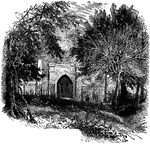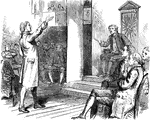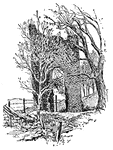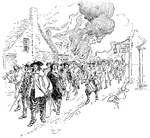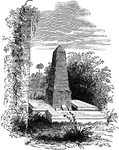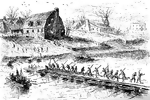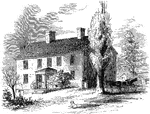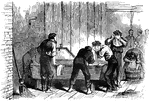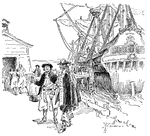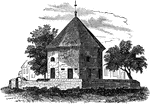The Places in Virginia ClipArt gallery offers 220 views of the commonwealth, particularly events of the Civil and Revolutionary Wars.
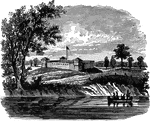
Fort Harrison, on the Wabash
Fort Harrison was an important component of the Confederate defenses of Richmond during the American…

Fort Runyon
"Section of Fort Runyon, Va., guarding the road to Alexandria, occupied by the Twenty-first Regiment,…
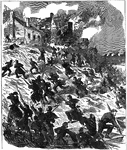
The Attack on Fredericksburg
The Battle of Fredericksburg, fought in and around Fredericksburg, Virginia, from December 11 to December…
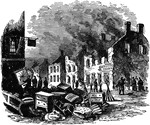
Scene in Fredericksburg on the Morning of Dec. 12, 1862
The Battle of Fredericksburg, fought in and around Fredericksburg, Virginia, from December 11 to December…
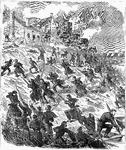
Battle of Fredericksburg
The Battle of Fredericksburg was fought in and around Fredericksburg, Virginia from December 11 to December…
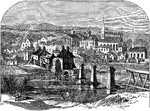
Fredericksburg, VA
Fredericksburg is an independent city in the Commonwealth of Virginia located 50 miles south of Washington,…

Battle of Gaines' Mill
The Battle of Gaines' Mill, also known as the First Battle of Cold Harbor or the Battle of Chickahominy…

Headquarters of General Butterfield
"Headquarters of General Butterfield, near Harrison's Landing, James River, Va." —Leslie, 1896

Grant's Campaign
"Grant's Campaign in Virginia. The Battle of Bethesda Church, between Crawford's division, Fifth Corps,…
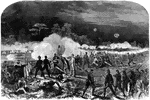
Grant's Campaign
"Grant's Campaign in Virginia. Repulse of Lee's night attack on Smith's Brigade, Hancock's Corps, Friday,…

Greenway Court
Greenway Court was an estate of Thomas Fairfax, 6th Lord Fairfax of Cameron in Clarke County, Virginia,…

Company H
"Successful charge of Company H, first Massachusetts regiment (Captain Carruth), on a Confederate redan…
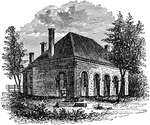
Hanover Courthouse
Hanover County Courthouse is the place where Patrick Henry practiced law and argued the case accusing…

View of Harper's Ferry, 1862, Looking South
The town of Harper's Ferry, where an important Civil War battle was fought in 1862.

Burning of the Arsenal at Harper's Ferry
The burning of the arsenal in Harper's Ferry during the American Civil War
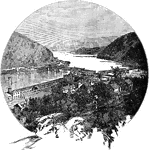
Harpers Ferry
Harpers Ferry is a historic town in Jefferson County, West Virginia. It is located at the confluence…

Harrison's Landing
Harrison's Landing at Berkeley Plantation is one of the first great estates in America located on the…
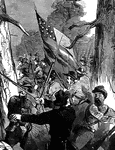
Attack at Harrisonburg
"Gallant attack by 150 of the Pennsylvania Bucktails, led by Colonel Kane, upon a portion of General…

Attack at Harrisonburg
"Gallant attack by 150 of the Pennsylvania Bucktails, led by Colonel Kane, upon a portion of General…
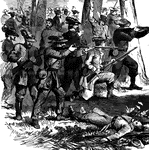
Attack at Harrisonburg
"Gallant attack by 150 of the Pennsylvania Bucktails, led by Colonel Kane, upon a portion of General…

Attack at Harrisonburg
"Gallant attack by 150 of the Pennsylvania Bucktails, led by Colonel Kane, upon a portion of General…
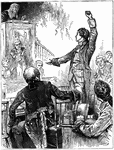
Henry, Patrick, Give me liberty or give me death!
A drawing of Virginia Convention in 1775, at St. John's Church in Richmond, Virginia, when Patrick Henry…

Hospital
"The war in Virginia--hospital scene after the Battle of Bristoe Station."— Frank Leslie, 1896
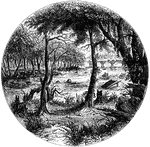
James River
"Scene on the James River, at Richmond. This view is from a long shaded island extending up the river…
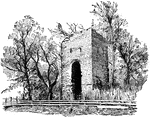
Ruins at the Brick Church at Jamestown
"Jamestown is now an island, for the sandy beach which once connected it with the mainland has disappeared.…

The Landing at Jamestown
"Down past the mouth of York River, where the French ships were blockading Cornwallis, into James River,…
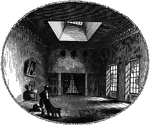
Bedroom in Which Jefferson Died
A depiction of the bedroom where Thomas Jefferson died in Charlottesville, Virginia.

Interior of Libby Prison
"Interior of Libby Prison, Richmond, Va., with prisoners from General Lee's army confined after the…

Libby Prison, Richmond
Libby Prison was a Confederate Prison at Richmond, Virginia, during the American Civil War.
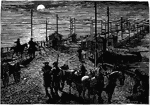
Soldiers Guarding Long Bridge
An illustration of soldiers guarding Long Bridge in Arlington, Virginia.

Loudon Heights
"View from Loudon Heights, Va., showing Harper's Ferry, Maryland Heights, Bolivar, etc. Harper's Ferry,…

Lynnhaven Bay, Virginia
Lynnhaven Bay is a relatively small body of water in Virginia separated from the rest of the Chesapeake…

Montpelier: The Home of James Madison
Montpelier was the estate of James Madison, fourth President of the United States.

Mahaska Crew
"The crew of the United States gunboat Mahaska, Captain Foxhall A. Parker destroying the water…
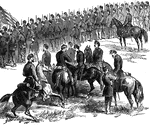
Battle of Malvern Hill
"Battle of Malvern Hill, near Turkey Bend, James River, Va., fought Tuesday, July 1st, 1862. The battle…

Battle of Malvern Hill
"Battle of Malvern Hill, near Turkey Bend, James River, Va., fought Tuesday, July 1st, 1862. The battle…

Battle of Malvern Hill
"Battle of Malvern Hill, near Turkey Bend, James River, Va., fought Tuesday, July 1st, 1862. The battle…
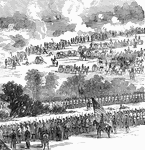
Battle of Malvern Hill
"Battle of Malvern Hill, near Turkey Bend, James River, Va., fought Tuesday, July 1st, 1862. The battle…

Battle of Malvern Hill
"Battle of Malvern Hill, near Turkey Bend, James River, Va., fought Tuesday, July 1st, 1862. The battle…

Battle of Malvern Hill
The Battle of Malvern Hill, also known as the Battle of Poindexter's Farm took place on July 1, 1862,…

Manassas
"The war in Virginia--General Hooker's army marching past Manassas, Va., June, 1863."— Frank Leslie,…
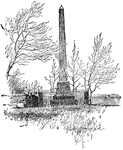
Mary Washington Monument
Monument in the memory of Mary Washington at Fredericksburg, VA. Mary Ball Washington (1708 –…

Massachusetts Battery
Martin's Massachusetts Battery C opening fire on the Confederate fortifications commanding the approaches…
